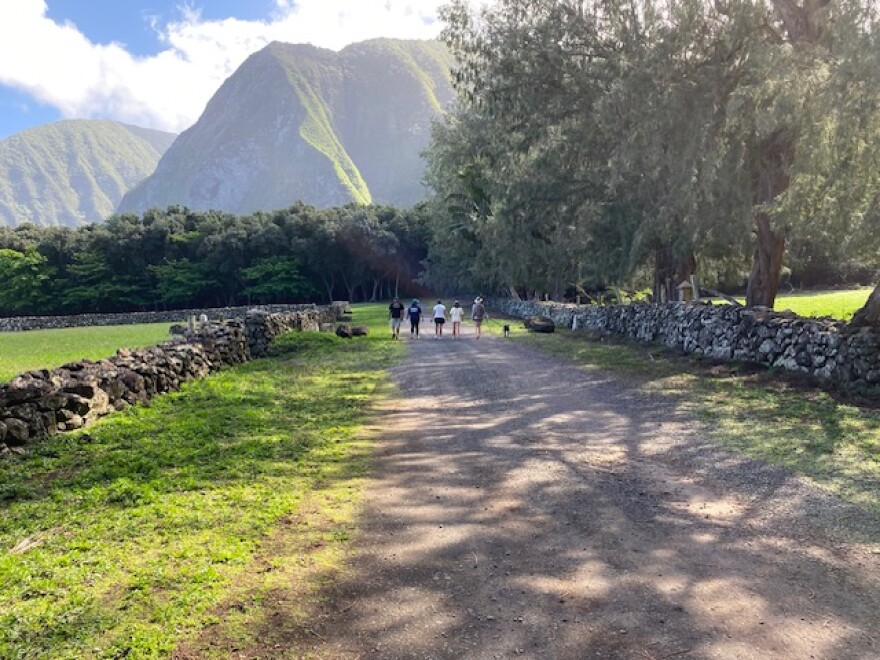On Jan. 6, 1866, 12 people arrived in Kalaupapa. They were forcibly exiled to the peninsula because of government policies on leprosy.
They were the first of nearly 8,000 men, women and children who were isolated there over the next 100 years.
“They were facing loneliness. They’d just been taken from their families," said Valerie Monson of Ka ‘Ohana O Kalaupapa, an advocacy organization of Kalaupapa residents, their family members and supporters.
"They had a disease that at that time was incurable. They were facing an uncertain future, so you just think of all of those things weighing on their minds.”

Ka ‘Ohana was instrumental in Kalaupapa Month being signed into state law in 2021, and it was first officially observed the following year.
There are a number of dates that make January significant for Kalaupapa.
Along with marking that first arrival, January is the birth month of the Catholic saints of Molokaʻi, Father Damien and Mother Marianne.
January 1895 was also when the final kamaʻāina of Kalaupapa, who had lived there for generations before it became a place of exile, were forced to leave the peninsula.
Quarantine laws surrounding Hansen’s disease were abolished in 1969, but many former patients chose to continue living there, making it their home to this day.
Monson says early residents quickly formed a community in Kalaupapa, despite the unimaginable hardships they faced.
“These people are so amazing," she explained. "They were so resilient and strong, and kind and caring for each other. This sense of community that Kalaupapa had is really something that was quite powerful.”
Earlier this month, a group of Kalaupapa residents, Ka ‘Ohana members and descendants gathered for a ceremony in the settlement.
They read the names of the first 12 and shared stories of their ancestors in Kalaupapa and the deep friendships they built there. Some also walked the 3 miles to Kalawao, following in the footsteps of those early residents who settled on the eastern side of the peninsula.

“It was a really moving event, we just felt like so many people of Kalaupapa who had passed were with us,” she said.
Building a Kalaupapa Memorial has been a longtime dream of residents to display the names of the nearly 8,000 people exiled there, many of whom rest in unmarked graves.
In 2009, Congress authorized Ka ‘Ohana O Kalaupapa to establish the memorial, and the Hawaiʻi Legislature later approved $5 million for its construction. But administrative challenges continue to stall the memorial’s completion.
“Right now there are eight residents, who have the right to live at Kalaupapa, still living. And we want this memorial to be unveiled when they're with us,” Monson told HPR.

A Kalaupapa Month educational webinar is scheduled for Jan. 27. Information is available on Ka ‘Ohana O Kalaupapa’s website.
“We want people to just be thinking of the people of Kalaupapa and what they went through," Monson said.
"Sometimes, especially the early people of Kalaupapa are described in a way that was not accurate. I also hope people continue to learn. I'd love to see people in January say, ‘I'm going to read a book about Kalaupapa.’”






